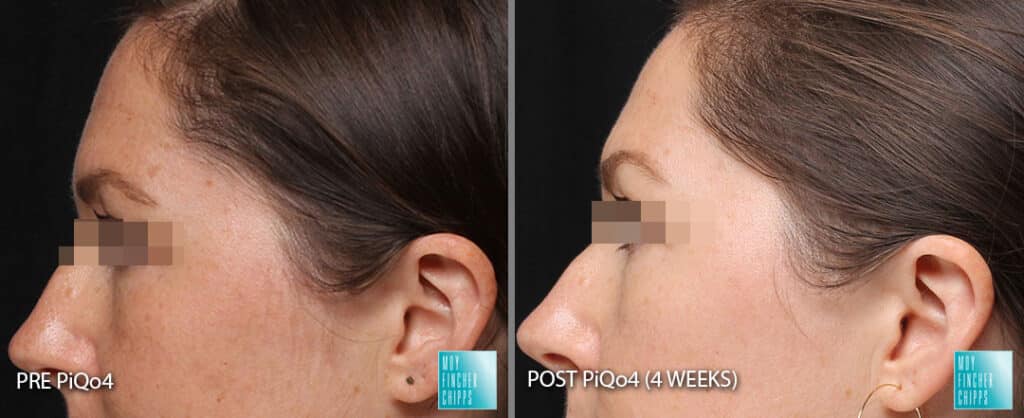What is PiQo4 Pigmentation Laser?
There are numerous types of skin pigmentation like brown spots from sun damage, age spots, freckles, birthmarks, and patchy brown areas caused by Melasma, a condition related to sun exposure and hormones. For some of these conditions, the pigment is very close to the surface of the skin and for others it is much deeper.
The piQo4 laser uses energy specifically aimed at the brown spot of concern, and delivers it so fast that the pigment is immediately shattered with minimal heat generated. This gives the piQo4 laser an advantage over other lasers and devices where bulk heating of surrounding tissues can cause increased tissue injury and patient downtime, and occasionally paradoxical worsening of pigmentation, especially on darker skin. Depending on the type of brown discoloration you have, we may recommend one or a series of treatments spaced weekly for best results.
What is the PiQo4 Pigmentation Laser used to treat?
PiQo4 treatments target pigmentation and discoloration on the face, neck, chest, arms, back and hands. Common pigmentation issues include sun damage, melasma, and post inflammatory discolorations from acne. PiQ04 laser treatments tackle a wide range of pigment shades with high energy and fast results. It is effective for everything from removing tattoos to birthmarks to discolored scars.
What is melasma and how is the PiQ04 laser beneficial?
A unique benefit of this laser is that it can treat Melasma. Melasma is a common condition that often affects women during pregnancy but can occur in both women and men. It is characterized by symmetrical brownish-gray patches on the face, neck, chest and forearms. Melasma is a chronic, recurrent, relapsing condition that causes no symptoms and is not associated with any specific disease. However, it is very psychologically damaging to a person’s self-confidence because the brown patches can be difficult to treat. Before the PiQ04 laser, melasma was treated with topical medications and chemical peels, but these often only provided on partial improvement.
How does it work?
The PiQ04 laser is different than others because it uses acoustic or sound energy rather than heat energy to obliterate discolorations of the skin. The PiQ04 laser is the only laser in the US that has four different wavelengths and the ability to deliver pulses in picoseconds, so that it targets just the unwanted pigment but spares normal surrounding skin. And, the spot size is completely adjustable to treat small and large areas and treatments are typically associated with minimal downtime.
At Moy-Fincher-Chipps in Beverly Hills, we have state-of-the-art technologies, and the skills, experience and expertise needed to deliver superior, personalized results for all of our patients. The PiQo4 laser is a break-through advancement in the treatment of pigmentation problems, tattoo removal and melasma. Our team of board certified dermatologists and cosmetic surgeons look forward to introducing you to this powerful device to boost your appearance, self-esteem and confidence. Schedule a dermatology consultation at one of our offices in Beverly Hills, Encino or Torrance, CA.







